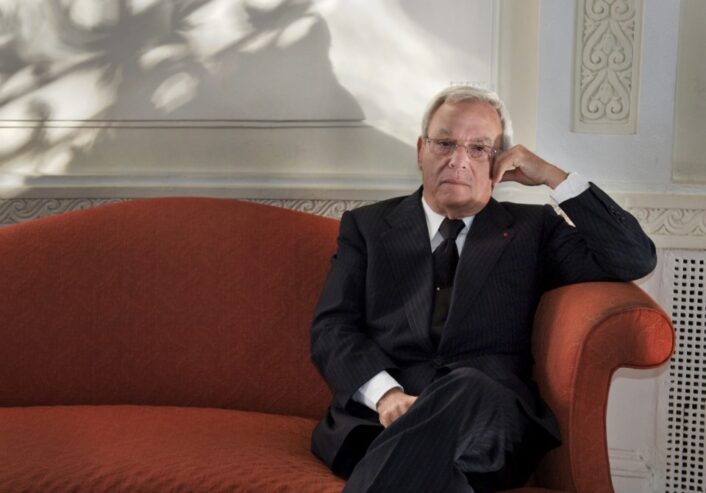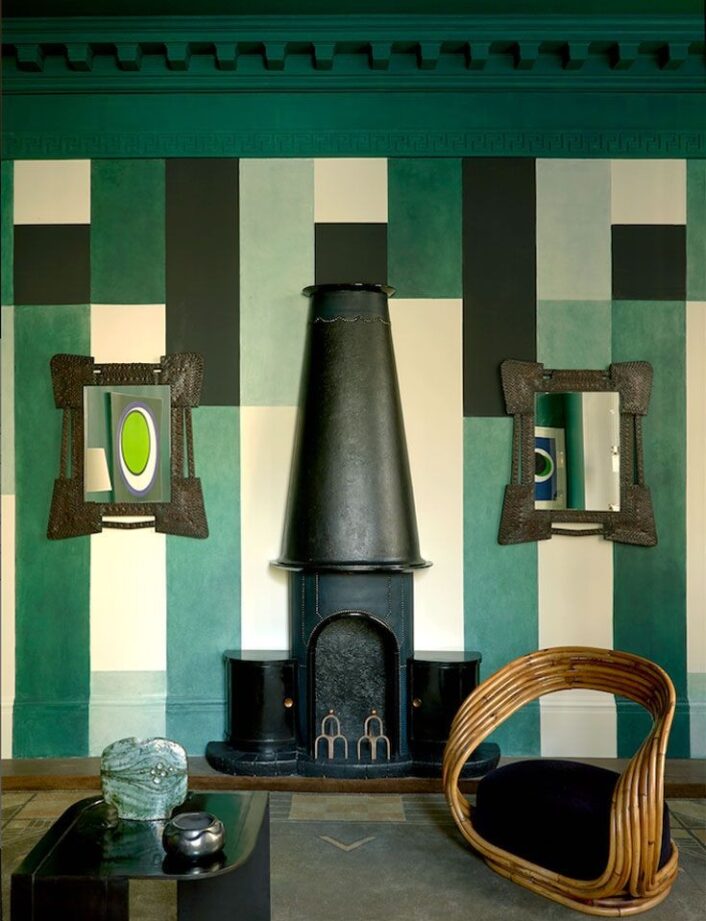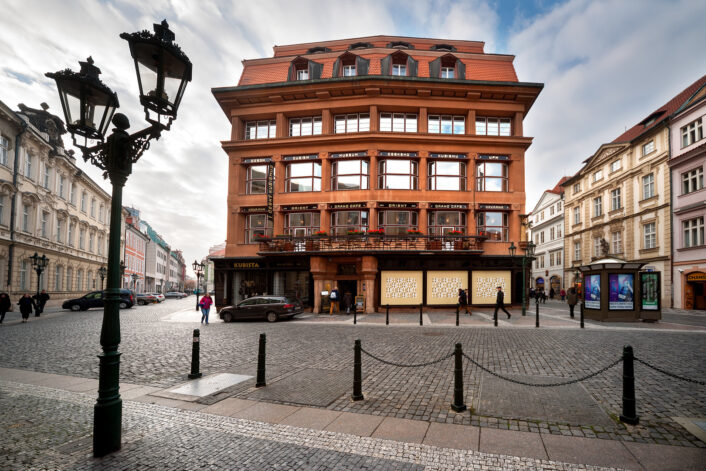Culture
Emilio Sanchez’s stamps
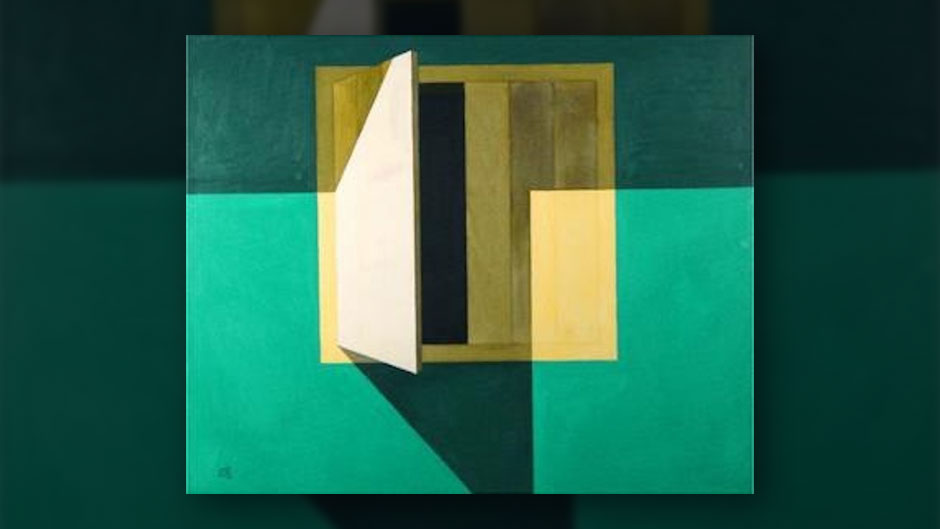
“Untitled (Ventanita entreabierta)”, 1981, oil and watercolor on paper.
Painting is displayed at Lowe Art Museum, University of Miami
Image courtesy of: University of Miami
Emilio Sanchez was a Cuban American painter known for his architectural paintings. The New York City-based artist was constantly on the move, often times to warm and tropical locations where he could capture elements of design as they intersect with everyday life.
This year, the United States Post Office will debut Sanchez’s paintings in a series of four in order to celebrate the centennial anniversary of his birth. “Los Toldos” (1973), “Ty’s Place” (1976), “En el Souk” (1972), and “Untitled” (1981) are the paintings that were chosen. About this overdue recognition, Victor Deupi, a Cuban American architectural history teacher at the University of Miami said (courtesy of an article by Tessa Solomon for ArtNew), “This is a tremendous accomplishment, particularly given how long he has been unrecognized by the art community. It’s a wonderful honor on many fronts because it gives so many voices to people of different races and ethnic backgrounds.”
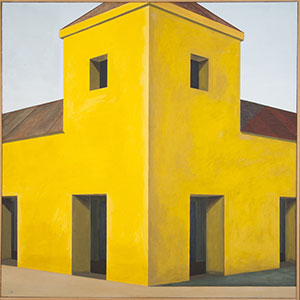
“La Fortaleza,” 1970-75, Oil on canvas
Image courtesy of: University of Michigan
Sanchez was born in Cuba to a wealthy and prominent family. The family’s means allowed him to travel frequently; as a young man, he moved to New York City to study at the Art Students League. Early on, Sanchez drew inspiration from his adopted hometown’s demographics. However by the 1960s, he started to focus on the city’s geometry. As his work became more abstract, he continued to maintain a semblance of naturalism. During the following ten years, his paintings’ subjects became houses and architectural themes.
Simple in form and devoid of unnecessary details, the dramatically colored and expertly-lit cityscapes have been compared to works of Edward Hooper and Charles Sheeler. However, Sanchez’s paintings differed in that he was able to capture the effect of light on color. Even without inhabitants, the artist’s buildings maintain a living presence.
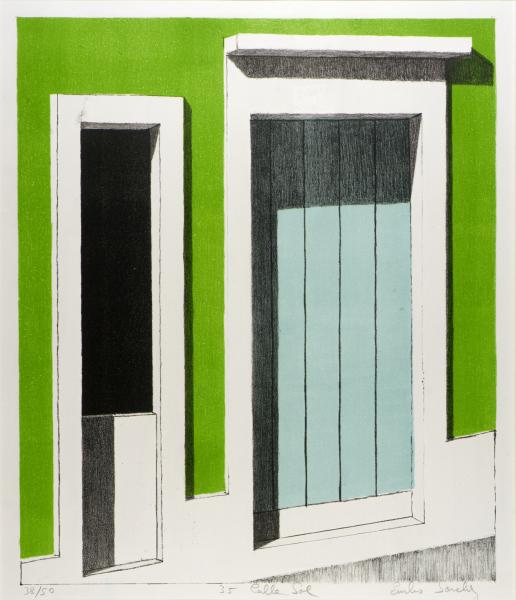
“35 Calle Sol”, color lithograph
Image courtesy of: Smithsonian American Art Museum
Throughout the following two decades, Sanchez explored countries around the Mediterranean. His paintings began to reflect different cityscapes; rather than New York City’s geometric skyscrapers, he painted Morocco’s stark white vernacular buildings. The white buildings that line Casablanca’s wide corridors particularly inspired Sanchez.
Continuously on the move, it is clear that travel inspired Sanchez. He continued to explore color through the sunsets he drew and the still-life portrayals of clothesline’s, flowers and sailboats that he came upon. No matter how far and wide Sanchez gravitated, he remained most intrigued with open windows and doorways and awnings.

In his will, Sanchez created the Emilio Sanchez Foundation. This non-profit preserves and advances the artist’s legacy through publications, research, and exhibitions.
Image courtesy of: Emilio Sanchez Foundation
By the late 1980s, Sanchez again turned his attention back to scenes of New York City. His Bronx storefronts and garages were often represented as solid blocks of color. Explaining Sanchez’s pieces, art historian and critic Rafael Diaz Casas said (courtesy of Art Daily), “This constant traveling contributed to a feeling of displacement, building on the idea of an absent household and contributing to a consequent battle of identity. In some respects Sanchez became his houses humanized, and he embraced them at creation as he disembodied fears and anxieties. Sanchez’s work is about inner and outer emotional spaces; he associates the landscape with his intimate memories of physical and psychological freedom.”
Sadly, toward the end of his life, Sanchez experienced chronic ophthalmological problems; the artist was nearly blind in one eye during his last years. Nevertheless, he continued to paint until his death in 1999.
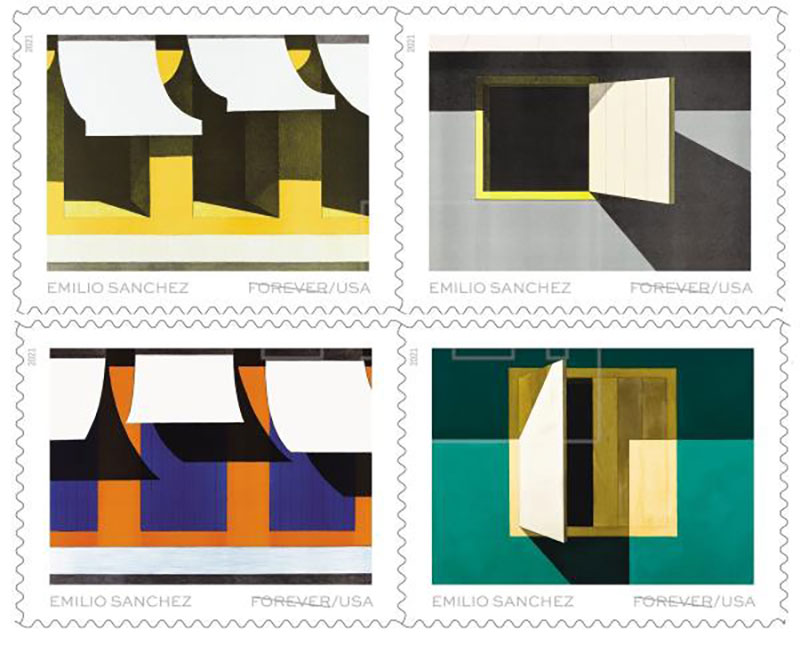
The four paintings selected for the stamps.
Image courtesy of: ArtNexus
In January, when the announcement about the new stamp series was presented, the United States Post Office said, “Sanchez explored the effects of light and shadow to emphasize the abstract geometry of his subjects. His artwork encompasses his Cuban heritage as well as his long life in New York.” Fitting indeed!
